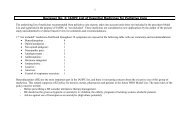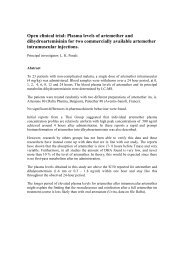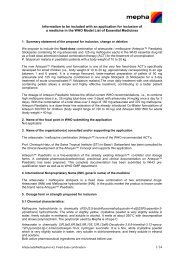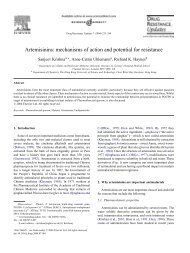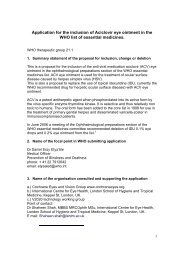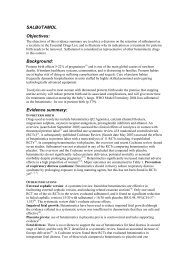SODIUM VALPROATE IN CHILDHOOD EPILEPSY
SODIUM VALPROATE IN CHILDHOOD EPILEPSY
SODIUM VALPROATE IN CHILDHOOD EPILEPSY
Create successful ePaper yourself
Turn your PDF publications into a flip-book with our unique Google optimized e-Paper software.
compared to 9% patients on phenytoin and 60% (6/10) patients given<br />
phenobarbitone. Of the two patients on sodium valproate in whom treatment was<br />
withdrawn, one was due to behavioural side-effects and the other due to tremor.<br />
In his study comparing sodium valproate with carbamazepine, Verity et al (14) showed<br />
a similar incidence of adverse effects and treatment withdrawal between the two<br />
drugs. Treatment was withdrawn because of adverse effects in 12% patients on<br />
carbamazepine and 15% patients on sodium valproate.<br />
Callaghan N et al (12) , also reported no significant difference between the overall<br />
incidence of side effects between carbamazepine, phenytoin and sodium valproate.<br />
(8, 20)<br />
Drug Interactions<br />
(a) Effect of sodium valproate on other drugs<br />
Sodium valproate can affect the plasma concentration of other drugs either through<br />
displacement from plasma proteins (sodium valproate is 80-94% plasma protein<br />
bound) or inhibition of hepatic metabolism<br />
- valproate may potentiate the effect of antipsychotics, MAO inhibitors,<br />
antidepressants and benzodiazepines<br />
- valproate increases phenobarbitone concentrations due to inhibition of<br />
hepatic enzymes and sedation may occur, especially in children<br />
- valproate may also inhibit the metabolism of primidone, carbamazepine and<br />
lamotrigine with potential for increased levels and toxicity of these antiepileptic<br />
drugs<br />
- valproate decreases phenytoin total plasma concentration; valproate<br />
displaces phenytoin from its plasma protein sites and reduces its hepatic<br />
metabolism<br />
- valproate may increase zidovudine plasma concentration<br />
- anticoagulant effect of warfarin and other coumarin anticoagulants may be<br />
increased following displacement from plasma protein binding sites by<br />
valproate<br />
(b) Effect of other drugs on sodium valproate<br />
- Anti-epileptic drugs with enzyme inducing effect (eg phenytoin,<br />
phenobarbitone, carbamazepine) decrease valproic acid concentrations<br />
- Mefloquine and chloroquine increase valproate metabolism and may lower<br />
the seizure threshold<br />
- Levels may be affected by other drugs including macrolide and carbapenem<br />
antibiotics<br />
Plasma valproate concentrations are not a useful index of efficacy therefore routine<br />
monitoring is unhelpful<br />
Use in Pregnancy (8)<br />
In offspring born to mothers with epilepsy receiving any anti-epileptic drug the overall<br />
rate of malformations has been demonstrated to be 2-3x higher than the rate (~3%)<br />
reported in the general population. An increased number of children with<br />
malformations have been reported in cases of multiple drug therapy.<br />
Developmental delay has been reported in children born to mothers with epilepsy; it<br />
is not possible to differentiate what may be due to genetic, social, environmental<br />
factors, maternal epilepsy or antiepileptic treatment.<br />
Sodium valproate page 10



